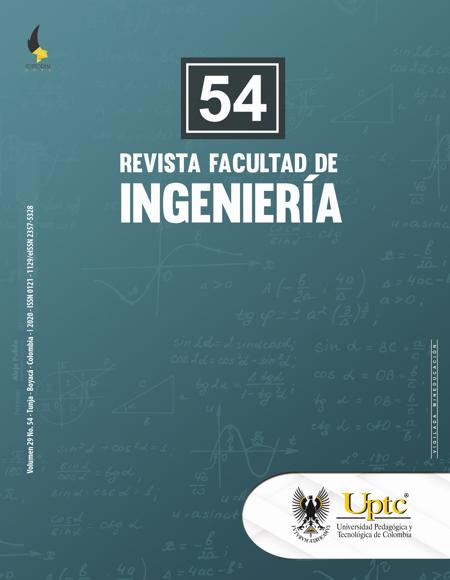Smart Lumini: Sistema de luminosidad inteligente basado en IoT para ambientes académicos usando hardware libre

Resumen
El consumo racional de energía eléctrica en grandes construcciones depende tanto de la cultura de consumo de los usuarios como de los sistemas de gestión implementados. En Colombia, pocas edificaciones cuentan con sistemas de gestión energética que se caractericen por adaptarse al usuario y que cuenten con un grado de inteligencia. Por ello, este documento describe el proceso de investigación para el desarrollo de un sistema de Internet de las Cosas (IoT), que ha sido diseñado para promover un servicio de iluminación inteligente en un ambiente académico. El sistema IoT orquesta una serie de sensores, sistemas de monitoreo y acciones controladas, basadas en el principio de hacer disponibles las funciones del sistema y el registro de consumo en tiempo real por medio de servicios web. Los dispositivos utilizados son "Cosas" con funcionalidad mejorada, convirtiéndose en "Cosas Inteligentes" dentro del paradigma de IoT. Metodológicamente, se siguió un proceso experimental, vinculando el desarrollo de instrumentos electrónicos, la construcción de servicios y el desarrollo de interfaces para una experiencia de usuario favorable. La investigación contribuye a dos áreas esenciales: los edificios inteligentes, mediante la adaptación inteligente de un entorno; y la sostenibilidad y la eco innovación, dado que el sistema proporciona información adecuada para la educación ambiental, en términos de consumo de energía en tiempo real, que repercute directamente en la cultura del uso justo de un servicio costoso para el medio ambiente.
Palabras clave
edificios inteligentes, eficiencia energética, Internet de las Cosas, Máquina a Máquina (M2M), ubicuidad
Citas
- S. Mehreen, and S. Patidar, “Understanding the energy consumption and occupancy of a multi-purpose academic building,” Energy and Buildings, vol. 87, pp. 155-165, 2015. https://doi.org/10.1016/j.enbuild.2014.11.027 DOI: https://doi.org/10.1016/j.enbuild.2014.11.027
- P. Rocha, A. Siddiqui, and M. Stadler, “Improving energy efficiency via smart building energy management systems: A comparison with policy measures,” Energy and Buildings, vol. 88, pp. 203-213, 2015. https://doi.org/10.1016/j.enbuild.2014.11.077 DOI: https://doi.org/10.1016/j.enbuild.2014.11.077
- W. Cui, Y. Kim, and T. S. Rosing, “Cross-platform machine learning characterization for task allocation in iot ecosystems,” in IEEE 7th Annual Computing and Communication Workshop and Conference (CCWC), pp. 1-7, 2017. https://doi.org/10.1109/CCWC.2017.7868438 DOI: https://doi.org/10.1109/CCWC.2017.7868438
- G. R. González, M. M. Organero, and C. D. Kloos, “Early infrastructure of an internet of things in spaces for learning,” in Eighth IEEE International Conference on Advanced Learning Technologies, pp. 381-383, 2008. https://doi.org/10.1109/ICALT.2008.210 DOI: https://doi.org/10.1109/ICALT.2008.210
- B. L. Risteska, and K. V. Trivodaliev, “A review of internet of things for smart home: Challenges and solutions,” Journal of Cleaner Production, vol. 140, pp. 1454-1464, 2017. https://doi.org/10.1016/j.jclepro.2016.10.006 DOI: https://doi.org/10.1016/j.jclepro.2016.10.006
- G. Ramírez-Gonzalez, C. Córdoba-Paladinez, O. Sotelo-Torres, C. Palacios, M. Muñoz-Organero, and C. Delgado-Kloos, “Pervasive learning activities for the lms.lrn through android mobile devices with NFC support,” in IEEE 12th International Conference on Advanced Learning Technologies, pp. 672-673, 2012. https://doi.org/10.1109/ICALT.2012.213 DOI: https://doi.org/10.1109/ICALT.2012.213
- L. Pocero, D. Amaxilatis, G. Mylonas, and I. Chatzigiannakis, “Open source IoT meter devices for smart and energy-efficient school buildings,” HardwareX, vol. 1, pp. 54-55, 2017. https://doi.org/10.1016/j.ohx.2017.02.002 DOI: https://doi.org/10.1016/j.ohx.2017.02.002
- G. Ramírez, M. Muñoz, and C. Delgado, “Exploring touching learning environments,” in M. Kendall, and B. Samways, eds., Learning to Live in the Knowledge Society, pp. 93-96, United States, Boston: Springer, 2008. https://doi.org/10.1007/978-0-387-09729-9_12 DOI: https://doi.org/10.1007/978-0-387-09729-9_12
- D. Bonino, and F. Corno, “Domains: Domain-based modeling for ambient intelligence,” Pervasive and Mobile Computing, vol. 8 (4), pp. 614-628, 2012. https://doi.org/10.1016/j.pmcj.2011.10.009 DOI: https://doi.org/10.1016/j.pmcj.2011.10.009
- A. Szalai, T. Szabo, P. Horvaáth, A. Timár, and A. Poppe, “Smart SSL: Application of IoT/CPS design platforms in ledbased street-lighting luminaires,” in IEEE Lighting Conference of the Visegrad Countries, pp. 1-6, 2016. https://doi.org/10.1109/LUMENV.2016.7745518 DOI: https://doi.org/10.1109/LUMENV.2016.7745518
- Y. S. Tan, Y. T. Ng, and J. S. Choong, “Internet-of-things enabled real-time monitoring of energy efficiency on manufacturing shop floors,” Procedia CIRP, vol. 61, pp. 376-381, 2017. https://doi.org/10.1016/j.procir.2016.11.242 DOI: https://doi.org/10.1016/j.procir.2016.11.242
- J. Malek, M. Laroussi, and H. Ben Ghezala, “A design framework for smart city learning scenarios,” in 9th International Conference on Intelligent Environments, pp. 9-15, 2013. https://doi.org/10.1109/IE.2013.34 DOI: https://doi.org/10.1109/IE.2013.34
- D. Gracanin, M. Handosa, H. G. Elmongui, and K. Matkovíc, “An approach to user interactions with IoT-enabled spaces,” in 14th International Conference on Telecommunications, pp. 139-146, 2017. https://doi.org/10.23919/ConTEL.2017.8000050 DOI: https://doi.org/10.23919/ConTEL.2017.8000050
- I. Khajenasiri, A. Estebsari, M. Verhelst, and G. Gielen, “A review on internet of things solutions for intelligent energy control in buildings for smart city applications,” Energy Procedia, vol. 111, pp. 770-779, 2017. https://doi.org/10.1016/j.egypro.2017.03.239 DOI: https://doi.org/10.1016/j.egypro.2017.03.239
- J. W. P. Ng, N. Azarmi, M. Leida, F. Saffre, A. Afzal, and P. D. Yoo, “The intelligent campus (icampus): End-to-end learning lifecycle of a knowledge ecosystem,” in Sixth International Conference on Intelligent Environments, pp. 332-337, 2010. https://doi.org/10.1109/IE.2010.68 DOI: https://doi.org/10.1109/IE.2010.68
- C. E. Kontokosta, “Modeling the energy retrofit decision in commercial office buildings,” Energy and Buildings, vol. 131, pp. 1-20, 2016. https://doi.org/10.1016/j.enbuild.2016.08.062 DOI: https://doi.org/10.1016/j.enbuild.2016.08.062
- R. De Lieto, C. Guattari, L. Evangelisti, G. Battista, E. Carnielo, and P. Gori, “Building energy performance analysis: A case study,” Energy and Buildings, vol. 87, pp. 87-94, 2015. https://doi.org/10.1016/j.enbuild.2014.10.080 DOI: https://doi.org/10.1016/j.enbuild.2014.10.080
- F. G. Montoya, A. Peña-García, A. Juaidi, and F. Manzano-Agugliaro, “Indoor lighting techniques: An overview of evolution and new trends for energy saving,” Energy and Buildings, vol. 140, pp. 50-60, 2017. https://doi.org/10.1016/j.enbuild.2017.01.028 DOI: https://doi.org/10.1016/j.enbuild.2017.01.028
- Z. Wang, and R. S. Srinivasan, “A review of artificial intelligence-based building energy use prediction: Contrasting the capabilities of single and ensemble prediction models,” Renewable and Sustainable Energy Reviews, vol. 75, pp. 796-808, 2017. https://doi.org/10.1016/j.rser.2016.10.079 DOI: https://doi.org/10.1016/j.rser.2016.10.079
- R. Madeira, and L. Nunes, “A machine learning approach for indirect human presence detection using IoT devices,” in Eleventh International Conference on Digital Information Manage110, pp. 145-150, 2016. https://doi.org/10.1109/ICDIM.2016.7829781 DOI: https://doi.org/10.1109/ICDIM.2016.7829781
- C. Gonzalez-Amarillo, C, Cárdenas-García, and M. Mendoza-Moreno, “M2M system for efficient water consumption in sanitary services, based on intelligent environment,” DYNA, vol. 85, pp. 311-318, 2018. https://doi.org/10.15446/dyna.v85n204.68264 DOI: https://doi.org/10.15446/dyna.v85n204.68264
- C. A. González-Amarillo, J. C. Corrales-Muñoz, M. Mendoza-Moreno, A. M. González Amarillo, A. F. Hussein, N. Arunkumar, and G. Ramírez-Gonzalez, “An IoT-based traceability system for greenhouse seedling crops,” IEEE Access, vol. 6, pp. 67528-67535, 2018. https://doi.org/10.1109/ACCESS.2018.2877293 DOI: https://doi.org/10.1109/ACCESS.2018.2877293